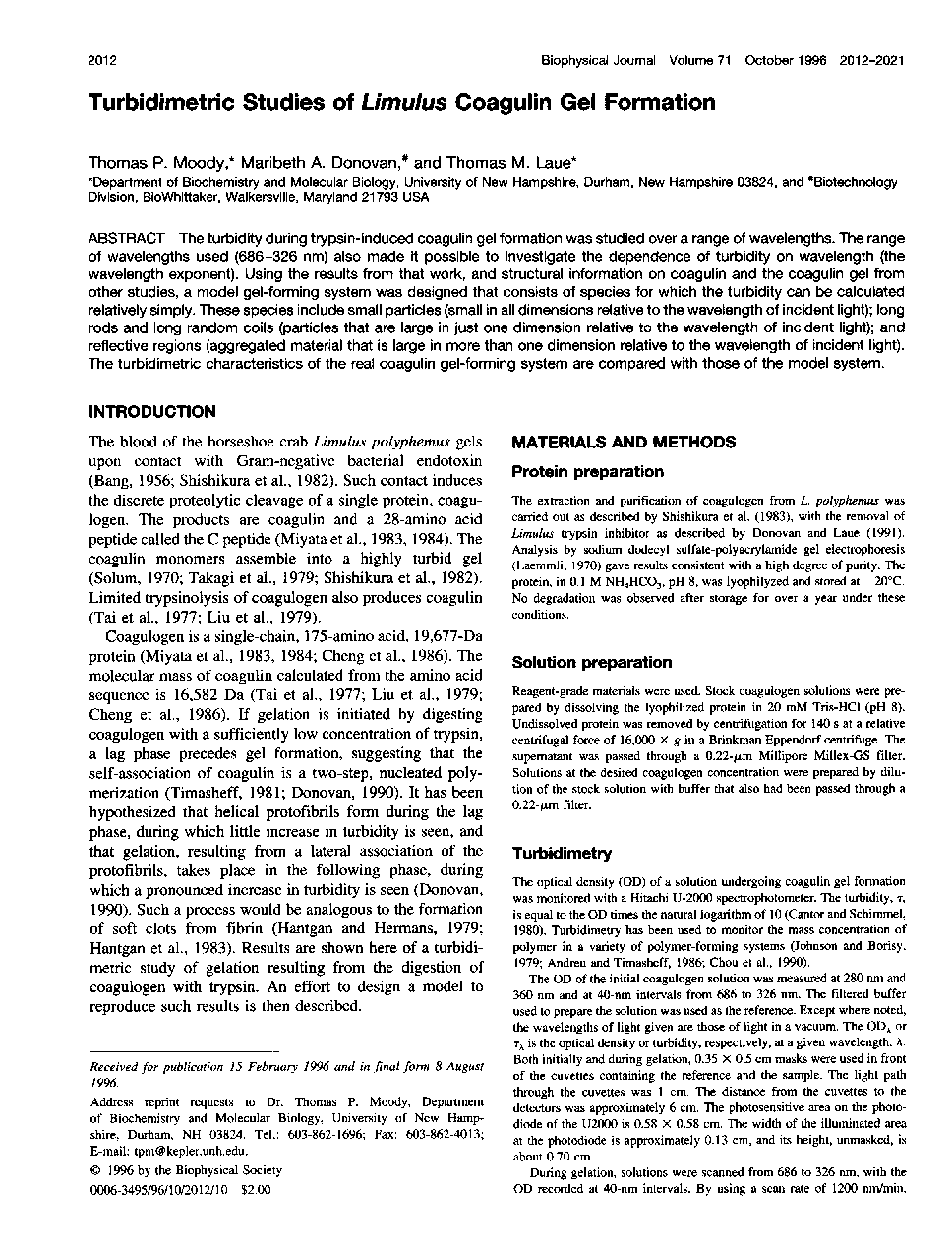| Article ID | Journal | Published Year | Pages | File Type |
|---|---|---|---|---|
| 1962811 | Biophysical Journal | 2012 | 10 Pages |
The turbidity during trypsin-induced coagulin gel formation was studied over a range of wavelengths. The range of wavelengths used (686–326 nm) also made it possible to investigate the dependence of turbidity on wavelength (the wavelength exponent). Using the results from that work, and structural information on coagulin and the coagulin gel from other studies, a model gel-forming system was designed that consists of species for which the turbidity can be calculated relatively simply. These species include small particles (small in all dimensions relative to the wavelength of incident light); long rods and long random coils (particles that are large in just one dimension relative to the wavelength of incident light); and reflective regions (aggregated material that is large in more than one dimension relative to the wavelength of incident light). The turbidimetric characteristics of the real coagulin gel-forming system are compared with those of the model system.
